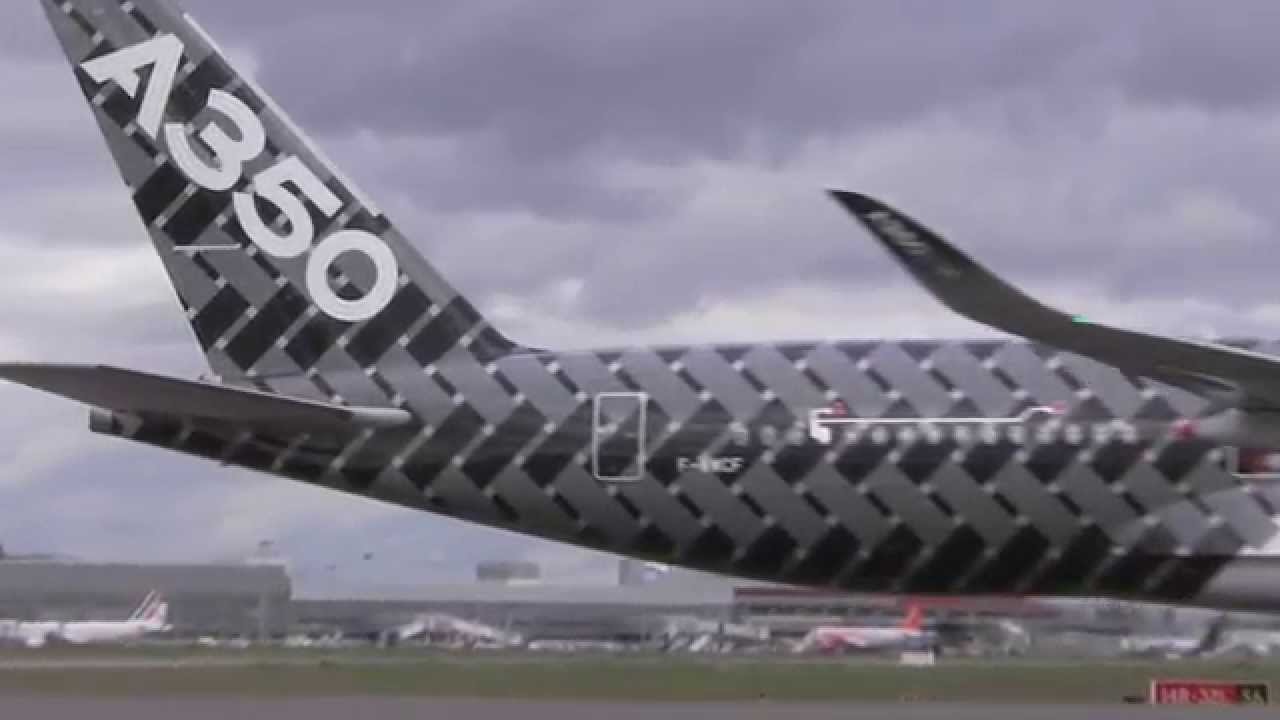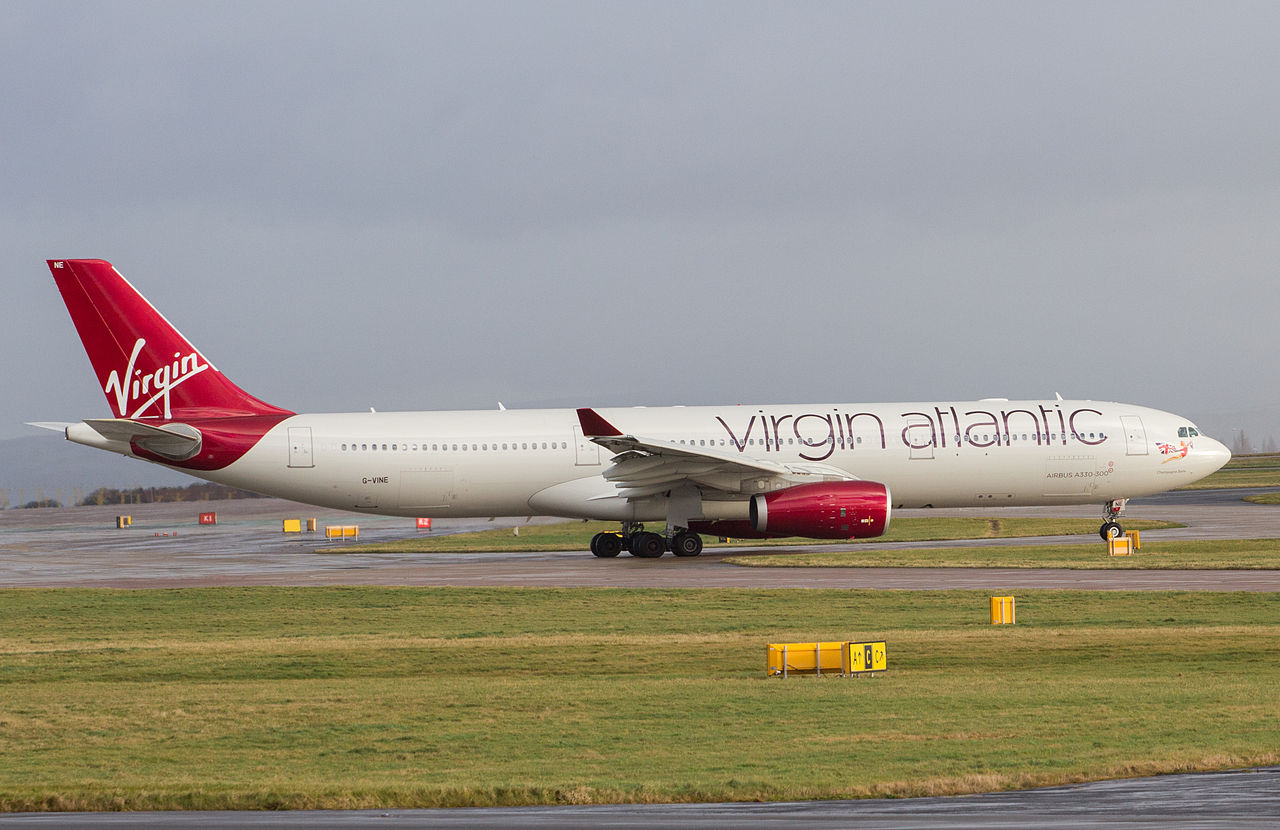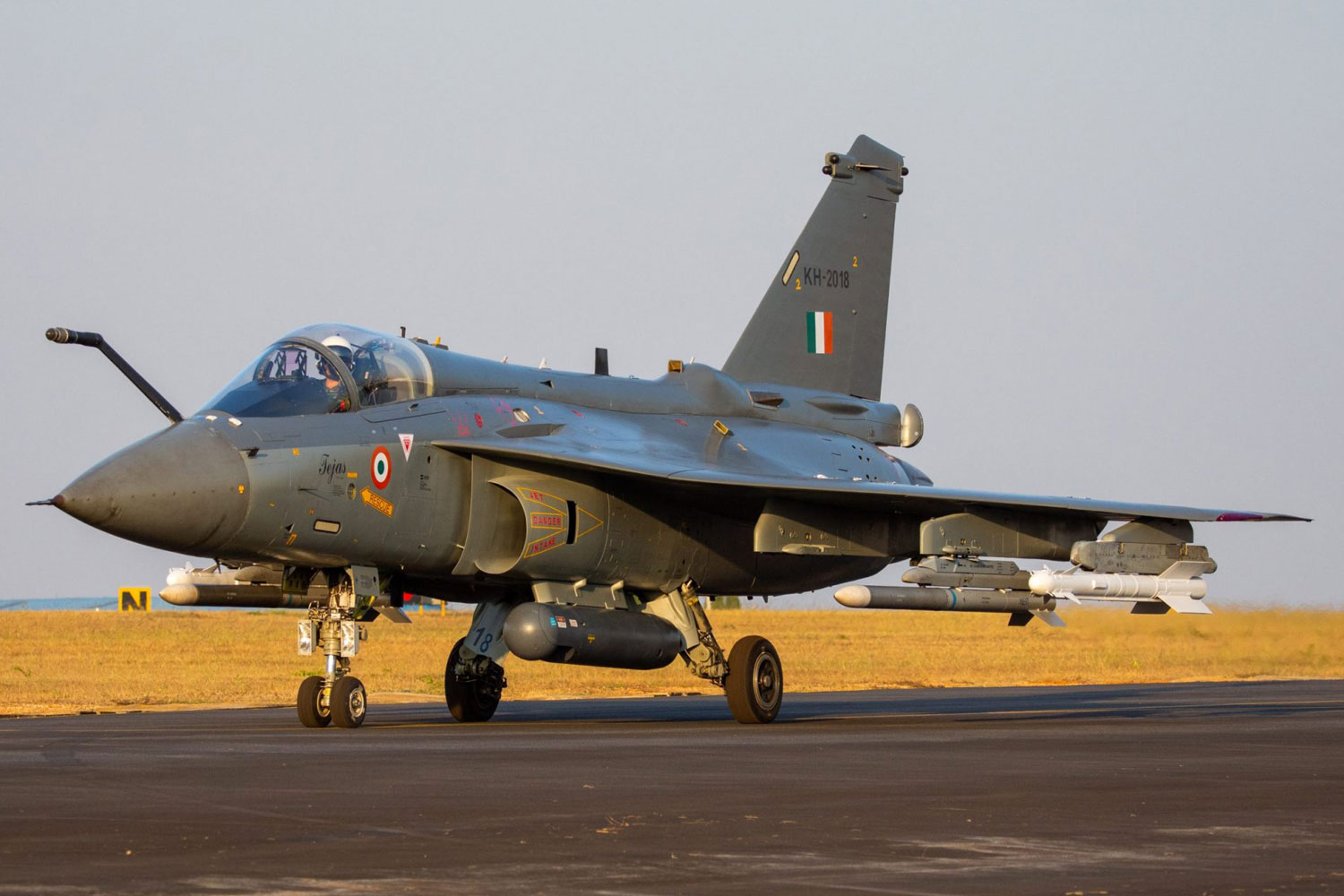IndiGo plans to make behavioural testing a requirement for pilot upgrade and promotion
Radhika Bansal
09 May 2022
IndiGo, India's largest airline, will require pilots to participate in Behavioural Event Interviews in order to be upgraded and promoted to management positions.
According to an internal memo reviewed by Business Standard, Behavioral Assessment Interviews (BEI) will be required for all management positions in the flight operations department, including Fleet Supervisors, trainers, and auditors, as well as for pilots seeking upgrades as captains from senior first officers.
IndiGo has collaborated with human resource consulting firm Aon Hewitt to create the programme, which will make BEI mandatory for upgrades and leadership positions.
IndiGo plans to make behavioural testing a requirement for pilot upgrade and promotion
The inclusion of BEI as part of upgrade and promotion comes in the backdrop of pilot unrest in the company, due to a delay in restoration of salary cuts which were induced in phase during two years of the pandemic.
The airline suspended five pilots—in what is the first cause of action against organised labour protest the airline witnessed in its inception.
“The attitude of its employees plays a pivotal role in shaping an organization. With our focus being on enhancing and shaping the right attitude for Pilots, inside and outside the cockpit, we move towards our next critical step in the Pilot Upgrade Project. I am confident that these behavioral interviews will help us choose and upgrade the right people for the right job which is a much required necessity for any organization to become world class,” Ashim Mittra, Senior Vice President, Flight Operations, IndiGo
In human resources terms, the objective of a BEI is to get very detailed behavioural descriptions of how a person will react under different conditions. In aviation, it is a crucial part of crew resource management, to choose the best-aligned candidates for the company and mitigate the future risks of pilot conflicts.
An IndiGo spokesperson said that while the BEI interviews will currently be rolled out for the flight operations department, gauging the impact and outcome of the same, it can be implemented across the departments.
A senior executive of the airline said that during the interview if a person fails, he will be handled and counselled by experts for six months after which he can reappear for the interview.
IndiGo has collaborated with human resource consulting firm Aon Hewitt to create the programme, which will make BEI mandatory for upgrades and leadership positions.
Inclusion of BEI is part of our long term plan to help align our Pilots to the company’s culture and values by selecting the right attitude and the right behaviour for the right work profile. It will identify and upgrade those pilots who are already aligned and guide those who need to be moulded and polished,” the executive said adding that while currently BEI will be used for upgrades & management positions it will soon be launched for newly inducted pilots too.
“We need to identify leadership competencies in our pilots which are aligned to the core values of IndiGo and give our customers an enhanced experience of on-time, hassle-free and courteous experience from the flight deck,” he said.
The airline has also begun a new process for newly hired pilots called "culture training," in which they will spend time with other flight operations departments such as rostering and scheduling to get used to their new jobs.
The airline has also begun a new process for newly hired pilots called "culture training"
Pilot pay has become a thorny issue for India's largest airline, with pilots dissatisfied that their pre-Covid pay has not yet been fully restored.
Despite a partial salary increase, pilots are still disgruntled because the airline is now operating over 1,600 flights per day, which is higher than before COVID grounded travel.
However, senior executives of the airline pointed out that the number of flights is not an indicator that the airline has regained its financial health and utilisation of aircraft still remains low with high fuel prices increasing the cost of operations manifold.
ALSO READ - IndiGo pilots investigated for using obscene language on emergency radio frequency
A few unhappy pilots expressing unhappiness over salary cuts even used expletives on the radio while operating aircraft, prompting an investigation by civil aviation regulator DGCA.
(With Inputs from Business Standard)
Read next
Potential software malfunction detected in Airbus A350 - EASA springs into action, issues emergency AD
Prashant-prabhakar
08 May 2022

In what could be a recipe for disaster, a potentially critical issue has been detected on the Airbus A350-900 and -1000, which could possibly render the pilots helpless in controlling the stability of the aircraft.
Reportedly, a software bug has been detected on the Airbus A350 which could potentially lead to a loss of elevator control-one of the worst control to be lost.
An elevator is a primary flight control surface that controls movement about the lateral axis of an aircraft-a movement referred to as "pitch".
Illustrative | Tekno-Port
Therefore, a directive was issued on May 5th and is tentatively expected to go effective from the 9th of May. Apparently, the European Union Aviation Safety Agency (EASA) has asked operators of the Airbus A350-900 and -1000 to amend the applicable AFM (airplane flight manual) and Minimum Equipment List accordingly.
An occurrence was reported where the PRIMary flight control computers (PRIMs) indicated that both elevator actuators were considered faulty." The airworthiness directive (AD) also states that subsequent investigations had found that incorrect instructions had been implemented with the introduction of the "PRIM P13 standard", which is part of the Flight Control and Guidance System (FCGS) X13 standardPublished as Emergency Airworthiness Directive 2022-0079-E, EASA
Furthermore, the Airworthiness Directive also stated that subsequent investigations pointed to incorrect instructions being implemented with the introduction of the "PRIM P13 standard"- which also happens to be a part of the Flight Control and Guidance System (FCGS) X13 standard.
Source
The emergency AD by EASA could mean further ADs could possibly follow in the days to come. EASA has set the deadline to MAY 16 within which it expects operators to amend the AFM with a temporary revision (TR), noted as AFM TR 132 issue 1 or 133 issues 1.
Inform all flight crews, and, thereafter, operate the aeroplane accordinglyEASA's directive stated
Now one might ask, how could a simple "amendment" possibly fix a loss of elevator control?
Reportedly, it is only a software bug "indicating" a malfunction, and there perhaps, might not be an "actual" loss of control of the elevator. In simple words, the bug in itself might not cause issues but the human actions resulting from following that definitely might.
SOURCE(s)
COVER: Aviation Week
Read next
Enhanced navigation services receive the go-ahead from stakeholders after satisfactory initial performance - here's what we know
Prashant-prabhakar
08 May 2022

The European Geostationary Navigation Overlay Service (EGNOS) is Europe's regional Satellite-Based Augmentation System (SBAS) used to enhance the performance of navigation satellite systems for the most safety-critical applications such as aircraft navigation and landing.
Airbus
This system which is under development, has Airbus collaborating with its key partners Indra and the Universitat Autònoma de Barcelona/IEEC, and the EGNOS V3 stakeholders to introduce new services based on multiple frequencies (L1/L5, E1/E5) of multiple constellations (GPS, Galileo), and will also embed sophisticated security protection against cyber-attacks.
EGNOS is composed of a large network of about 50 ground stations deployed over Europe, Africa and North America, two master control centres located near Rome and Madrid, and a System Operation Support Centre in Toulouse.
Touted to provide critical navigation services even at airports without the presence of expensive instrument landing systems, the initial assessment of the system performance highlighted the high level of maturity of the design and its adequacy to flawlessly continue the provision of critical navigation services, such as precision approach and landing everywhere in Europe. Additionally, the report also confirmed that EGNOS V3 would deliver the accuracy, continuity, integrity and availability required for Safety-of-Life operations up to Category I - with margins.
Illustrative | ASDNews
At this stage of the development, this performance review has demonstrated the increase in benefits which EGNOS V3 should bring to Europe. As the full power of this new EGNOS generation has still to be qualified in the following phase of the project, this first important milestone of the Detailed Design phase has met our expectations on all legacy aspects assessed. We look forward to the next steps, as we are confident that EGNOS V3 will deliver as requiredsaid Didier Flament, Head of EGNOS & SBAS Division at ESA
The EGNOS V3 test signal campaign involved the new version of EGNOS Navigation Land Earth Station (NLES) developed by Indra as well as the Eutelsat E5WB’s dual-frequency SBAS payload developed by Airbus.
Illustrative | European Space Agency
The successful broadcast of the EGNOS V3 test signal is a key event in the life of the program. Together with other ongoing field experiments, this “hello world” of EGNOS V3 lays the foundation for the deployment of the new generation of EGNOS. The program and the system are now entering into reality on their journey to enable continuous and improved Safety of Life services across the European Union and beyond said Silvio Sandrone, Head of Navigation Programs at Airbus
Silvio Sandrone | Uni Bremen
Combining both, Galileo and GPS signals to monitor ionosphere-induced position errors, would reportedly increase the availability of the service in the western and southwestern periphery of Europe, thereby expanding the area in which satellite navigation landing becomes possible without requiring dedicated ground systems.
The consolidation of EGNOS’ service area will be beneficial to our customers, as it will support their satellite navigation-guided operations to even more destinations. Airbus is very pleased to support the growth of EGNOS users in commercial aviation in Europe with the recent certification of the SBAS Landing Systems on Airbus A320 and A330 families. We continue to support the development of any system which will contribute to a safer and more sustainable air trafficcommented Hugues de Beco, head of ATM Programs within Airbus Commercial Aircraft
EGNOS is a component of the European Union Space Programme designed to improve the positioning service of the Global Positioning System and Galileo for Safety of Life users.
SOURCE(s)
COVER: Airbus
Read next
Boeing on May 5 announced a significant scaling up of the MRO facilities within India for the Indian Navy’s fleet of P-8I long-range maritime reconnaissance and anti-submarine warfare aircraft.
The companies will carry out extensive MRO works on a total of three P-8I aircraft at the Air Works facility in Hosur, Tamil Nadu, India.
Three Indian Navy Boeing P8Is are simultaneously undergoing heavy maintenance checks at the Hosur facility of Air Works, India’s largest aviation MRO, to demonstrate the growing capability to service these mission-critical platforms in India.
Boeing expands MRO capability for Indian Navy's P8I fleet
The P8I is the Indian Navy’s most capable surveillance and reconnaissance aircraft. The induction of the P8I fleet in 2013 is widely regarded as a game-changer for India’s maritime capabilities. Nine of these aircraft have been delivered and three more are in the pipeline.
The Boeing-Air Works collaboration is meant to enable faster turnaround and enhanced operational capability of key defence platforms.
“The partnership began with the first P-8I aircraft Phase 32 checks and has grown to include Phase 48 checks and MRO on the landing gear of the Indian Air Force’s 737 VVIP aircraft,” Boeing stated.
Three Indian Navy Boeing P8Is are simultaneously undergoing heavy maintenance checks at the Hosur facility of Air Works
The world’s largest aerospace company is increasing MRO availability for its platforms in India as an illustration of its alignment with India’s self-reliance (Aatmanirbhar Bharat) quest.
Boeing’s “strategic collaboration” with Air Works is an important first step under the Boeing India Repair Development and Sustainment (BIRDS) hub launched last year. The BIRDS hub envisions a collaboration with key local companies and businesses to develop India into an aviation and defence repair and sustainment hub.
“Maintaining such mission-critical platforms for the nation’s defence forces is a matter of immense pride for Air Works. At the same time, it also reflects the “coming-of-age” or maturing of indigenous MRO capabilities in aviation, defence and aerospace, which can deliver huge advantages for the country."D. Anand Bhaskar, Managing Director & CEO, Air Works Group
Bhaskar wants the partnership to extend to other critical Boeing Defence platforms used by India’s armed forces.
Established in 1951, Air Works has a pan-India network across 27 cities and provides MRO support to Boeing 737 and Airbus 320 fleets besides the ATR 42/72 family. It is also an Authorized Service Centre (ASC) for Bell and Leonardo helicopters and undertakes modification and assembly of rotary-wing aircraft.
“The ongoing satisfactory execution of heavy maintenance checks on three P-8I platforms concurrently by Air Works is a remarkable achievement. Such efforts contribute towards the Government’s vision of making India an MRO hub for the region."Surendra Ahuja, Managing Director, Boeing Defence India
Boeing has an Indian supply chain with more than 275 local companies and a joint venture to manufacture fuselages for Apache helicopters. The US firm employs close to 4,000 people in India, and more than 7,000 people work with its supply chain partners. Annual sourcing from India stands at USD 1 billion.
Boeing India and Air Works intend to commemorate their collaboration at the Boeing India Aatmanirbharta in Defence conference being organized in New Delhi with participation from dignitaries from the Indian Navy, Air Works Group, and other key supplier-partners.
Boeing has delivered the 12th P-8I maritime patrol aircraft to the Indian Navy
ALSO READ - Indian Navy gets its 12th P-8I maritime patrol aircraft from Boeing
Recently, Boeing delivered the 12th and the last aircraft to the Indian Ministry of Defence.
The P-8I aircraft is a variant of the P-8A Poseidon aircraft that Boeing developed as a replacement for the US Navy’s ageing P-3 fleet. In May 2021, the US State Department approved the proposed sale of six P-8I patrol aircraft and related equipment, a deal estimated to cost 2.42 billion dollars.
Read next
Virgin Atlantic flight forced to turn around as the pilot hadn't done final flying test
Radhika Bansal
07 May 2022

A Virgin Atlantic flight to New York, carrying 300 passengers, was forced to return to London Heathrow after the co-pilot admitted mid-flight that he hadn't taken his last flying test.
The Virgin Atlantic A330 aircraft was 40 minutes into the journey and was flying over Ireland when the airline managers on the ground discovered that the first officer had not taken his final flying exams. The message was conveyed to the captain and the flight was ordered to return to Heathrow.
Virgin Atlantic flight was forced to turn around as the pilot hadn't done the final flying test
Passengers landed in the US almost three hours later than planned and were forced to wait on the runway while a qualified replacement was found. Passengers were reportedly angry with the long delay and the incident delayed other flights, reported Mirror.
Virgin Atlantic apologised for the confusion and said that the issue was caused by a rota mistake. It also assured passengers that safety had not been compromised, with both pilots fully licensed and qualified to operate the aircraft.
A Virgin Atlantic spokesman told MailOnline "Due to a rostering error, flight VS3 from London Heathrow to New York-JFK returned to Heathrow on Monday, May 2 shortly after take-off."
The co-pilot needed a "final assessment flight" with a training captain to be able to fly with Virgin Atlantic policy.
"We apologise for any inconvenience caused to our customers who arrived two hours, 40 minutes later than scheduled as a result of the crew change."
The Sun, however, quoted a source as saying: "You could have cut the tension in the cockpit with a knife. The plane got as far as Ireland and then they found out the first officer was still in training... It was embarrassing for everyone and the passengers were furious."
According to the Daily Mail, the co-pilot needed a "final assessment flight" with a training captain to be able to fly with Virgin Atlantic policy.
Flight VS3 turned back as the captain had not been designated as a trainer.
As qualified pilots, first officers are also meant to support the captain by communicating with air traffic control and flying the plane.
A Civil Aviation Authority (CAA) spokesperson confirmed both pilots were suitably licensed and "qualified to undertake the flight".
It is to mention that the initial first officer reportedly joined the carrier in 2017. He was fully qualified under UK aviation regulations but had not completed a final assessment flight which is part of the airline's internal requirements. Therefore, flight VS3 turned back as the captain had not been designated as a trainer.
Read next
It is ironic that talks about HAL manufacturing Tejas MK2 shortly are floating around, even as HAL has defaulted on its scheduled delivery of Tejas MK1 and Tejas MK1A, not once but twice, despite the Final Operational Clearance (FoC) by the Indian Air Force (IAF). The prolonged delay might cost the state-owned defence firm dearly, thanks to the steep hike in the price of the composite materials required to manufacture the fighter jets.
LCA Tejas Mk1 | Representative | The Economic Times
Weary of the delay, the first time around, when the IAF decided to monitor the production line all by itself, the production of Tejas finally fell in line. However, there is yet anotherdelay now, but the reason is different– the escalating price of composite materials used to build the fighter jets.
What exactly is a composite?
A composite is a material made from two or more materials of dissimilar properties, that, when combined, make the resultant material stronger than the individual materials by themselves. Simply put, composites are a combination of components.
Most composites are made of just two materials. One is the matrix or binder. It surrounds and binds together fibres or fragments of the other material, called the reinforcement.
Romeo RIM
For instance, wood, a natural composite, is a combination of long fibres of cellulose (a very complex form of starch) held together by a much weaker substance called lignin. Although lignin is weak in itself, its binding capacity is very high and hence it acts as a natural glue that binds and stabilizes the cellulose fibres. Cellulose is also found in cotton and linen, but it is the binding power of the lignin that makes a piece of timber much stronger than a bundle of cotton fibres.
The bones in our body are also a composite. It is made from a hard but brittle material called hydroxyapatite (mainly, calcium phosphate), and a soft and flexible material called collagen (a protein). Collagen is also found in our hair and fingernails. On its own, it would not be of much use in the skeleton, but when combined with hydroxyapatite it gives the bones the properties that are needed to support the body
Composites are also developed by men in labs. An example of a man-made composite would be plywood. Another simple example of man-made composites is concrete. Here the aggregate (small stones or gravel) is bound together by cement. Concrete has good strength under compression, and it can be made stronger under tension by adding metal rods, wires, mesh or cables (i.e., creating reinforced concrete).
The first modern composite material was fibreglass. It is still widely used today in boat hulls, sports equipment, building panels and many car bodies. The matrix is plastic, and the reinforcement is glass shredded into fine threads and often woven into a sort of cloth. On its own, the glass is very strong but brittle, and it will break if bent sharply. The plastic matrix holds the glass fibres together and also protects them from damage by dispersing the forces acting on them.
Fibreglass Composite | Illustrative | SMI Composites
Some advanced composites are now being made using carbon fibres instead of glass. These materials are lighter and stronger than fibreglass but more expensive to produce. They are used in aircraft and expensive sports equipment such as golf clubs.
The new Airbus A380, the world’s largest passenger airliner, incorporates modern composites in its design. More than 20 per cent of the A380 is made of composite materials, mainly plastic reinforced with carbon fibres. The design is the first large-scale use of glass-fibre-reinforced aluminium, a new composite that is 25 per cent stronger than conventional airframe aluminium and also 20 per cent lighter.
Representative | ResearchGate
Why use composites?
The most significant advantage of modern composite materials is that they are light in weight yet strong. An optimal combination of matrix and reinforcement material can yield new materials to suit the requirements of a particular application. Composites also provide design flexibility because most of them can be moulded into complex shapes. The downside is often the cost. Although the resulting product is more efficient, the raw materials are quite expensive.
Fab Academy
The DRDO laboratories in Pune, Hyderabad and Bengaluru have been working on creating composites for the last two decades. The aerospace-related product development by DRDO, CSIR and ISRO labs took the lead in establishing manufacturing industries and processes for product development. Some examples include carbon fibre reinforced bridges of different spans for the army that are 40 per cent lighter in comparison to their metallic counterparts. Besides, glass fibre-reinforced armoured vehicle hulls comprising integral ceramics armour have been developed. Composite materials are fast replacing traditional materials in design, and end products in the industrial sectors. Easily accessible and reliable, the composite elements are playing a pivotal role in the aerospace and defence sector.
HAL LCA Assembly Line | Illustrative | Onmanorama
Though composites are triggering a revolution, they have also become a bane to the defence manufacturing sector, thanks to the increase in import duty and the supply chain disruption of the specialised materials during the Covid 19 pandemic. Shipment costs rose sharply, besides, most composite raw materials need to be transported and stored in 20° C freezers. Moreover, composites come with an expiry date and if not used within the stipulated time, result in massive losses.
Representative | Defense News
Indigenous development and manufacture of weapons, especially in Defence, is associated with high performance. And composites are being used to make our defence weaponry stronger. They are currently in use in many Indian weapons programmes. The airframe of the Light Combat Aircraft (LCA), superstructures of naval vessels, and components for various strategic and non-strategic missile systems are a few examples.
Representative | See Latest
According to sources, 463 vendors in the LCA programme – supplying carbon wing skins, forward fuselage, flaperons, rudder, keel beam, front fairing, upper fuselage shells, crown and side panels – are already struggling with the increase in raw material costs, which has risen between 30-100 per cent. This will in turn increase the delivery time twofold. An additional challenge is that HAL’s LCA assembly line has still not matured enough. Since each aircraft is not a replica of the previous one, the components have a different iteration each time and it goes through the full operational capability stage.
The Light Combat Aircraft (LCA) uses 45 per cent of carbon composites which now is a matter of great distress as the first batch of the composites is expected to be delivered only by February 2024. Each LCA Mk1A uses 2.24 tons of composites; 23.1 tons for submarines, 945 kg for helicopters, and 640 kg for UAVs, according to a KPMG report on military materials. Multi-functional composites are used for armour application. Aerospace composites with functional features such as radar transparency, stealth, etc., are also being developed indigenously.
Representative | AA Me,IN
SOURCE(s)
COVER: Air Data News



Comment